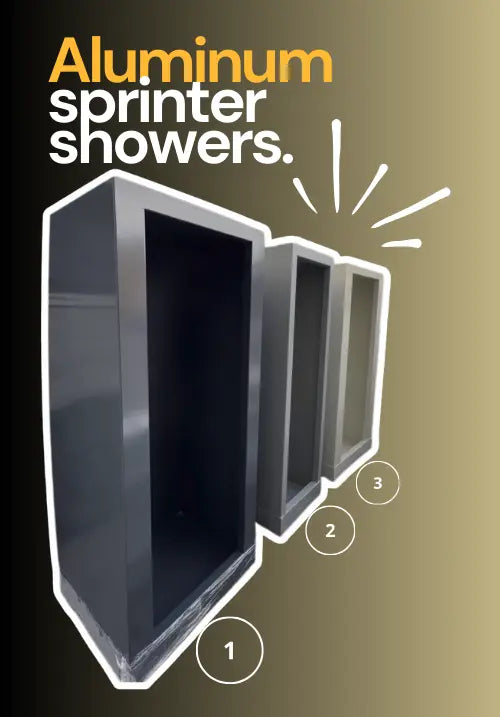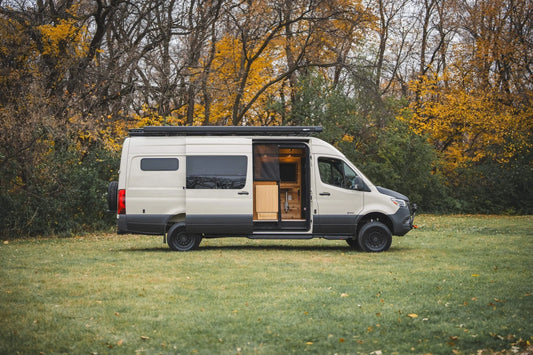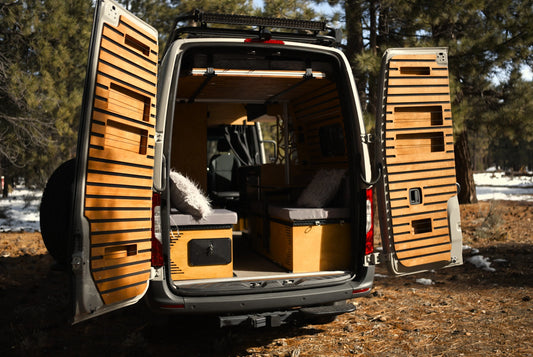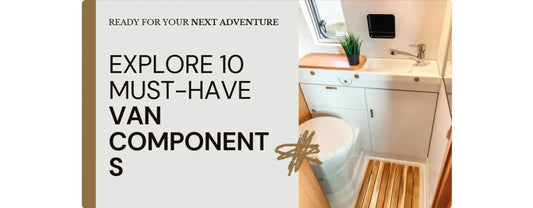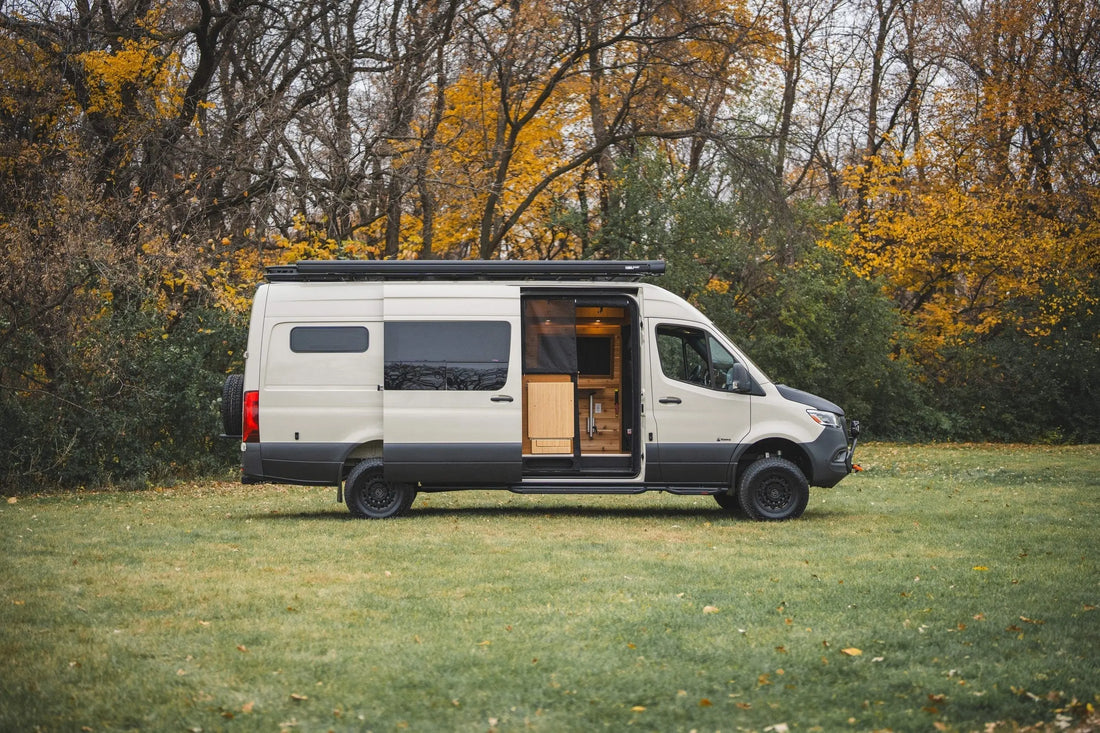
How to Keep Mice Out of Camper During Winter And Storage
Big Bear VansShare
Mice may be small, but the damage they can cause to your RV is anything but minor. From gnawed wires to contaminated food, a rodent infestation can quickly turn your travel dreams into a nightmare.
The old saying, “when the cat is away, the mice will play,” is often true. The minute humans turn their backs, mice can find a window of opportunity to invade our spaces in search of food and shelter.
A motor home or camper is especially vulnerable to a mouse invasion, since these vehicles can stay so how to keep mice out of an RV? When the weather gets cold, mice look for any chance to find a warm space for the winter, and your vehicle may offer the perfect accommodations. And while you leave your RV unattended, mice have plenty of time to ruin your home away from home.
Whether you use your RV seasonally or year-round, keeping mice out should be a top priority. In this guide, we’ll cover why it’s important to prevent mice infestations, how they get in, the damage they cause, and the best ways to keep them out for good.
Key Takeaways:
- Understand why it’s important to keep mice out of RVs during winter and Storage. Understand the signs of their presence.
- Inspect and seal potential entry points, use deterrents & repellents, maintain a clean RV & proper food storage for prevention.
- Address infestations promptly with humane trapping options instead of inhumane traps/poisons.
Why It’s Important to Keep Mice Out of RVs
Mice may seem like small, harmless creatures, but when they invade an RV, they can cause serious problems. These tiny pests can create major damage, pose health risks, and disrupt the overall comfort of life on the road. Keeping mice out of an RV is essential for maintaining a safe, and fully functional living space.
If there is one thing you absolutely want to keep out of your RV, it is a mouse. These rodents can be extremely damaging to your RV’s condition, as they can chew on wires and lines and make nests within your furniture and belongings.
This will cause cosmetic damage and severe issues with the electrical or hydraulic systems, which can ultimately affect your steering, braking, electricity and much more.
Mice, rats and other rodents also pose potential health hazards. Many carry a variety of diseases, including salmonellosis and ringworm. Plus, they might even have parasites that can carry dangerous illnesses you want to avoid.
1.Prevent Expensive Damage
Mice have strong teeth that can chew through almost anything, including:
- Electrical wiring: This can lead to malfunctioning appliances,power failures, or even fire hazards.
- Insulation: Reducing the effectiveness of RV’s temperature control.
- Plastic and rubber components: Fuel lines, water pipes, and even structural parts of RV can be damaged
2.Protect Your Health
Mice can carry diseases like hantavirus, salmonella, and leptospirosis which can be transmitted through:
- Urine and droppings: Contaminating surfaces and food supplies
- Gnawed food packaging: Introducing bacteria into your food
- Fleas and parasites: Mice can carry unwanted pests that infest RV
3.Maintaining a Clean and Comfortable Living Space
The presence of mice can quickly turn an RV from a comfortable retreat into an unsanitary and stressful environment.
- A mouse-infested RV smells bad due to droppings and urine
- Nesting materials create clutter and unsanitary conditions.
- Scratching and rustling noises at night can disrupt sleep
Common Entry Points for Mice in RVs:
RVs are homing beacons for mice, offering food, shelter and warmth. Mice will try to find any crack or crevice to make their way inside.
Openings can be as small as a dime, and these rodents will squeeze their way through before nesting in the depths of your RV.
Mice are sneakily and can fit through gaps as small as a dime. Here are the most common ways they enter an RV
1.Vents and Exhaust Openings
- The exterior vents for appliances like refrigerator, heaters, and water heaters provide easy access.
- Solution: Install fine mesh screens over all vents.
These are great for blocking areas like heating and fan exhausts. Premade screens are easy to find and made to fit these areas. They also keep out wasps and dirt dobbers.
2.Gaps Around Pipes and Wires
- Openings where plumbing and electrical wires enter the RV can serve as hidden entry points.
- Solution: Seal gaps with steel wool and expanding foam.
The steel fibers are near impossible for mice to chew through. Cheap and non-toxic, you can also shape it to fill almost any space.
3.Slide-Out Steals and Door Gaps
- Worn-out seals around slide-outs and doors create small gaps where mice can squeeze through.
- Solution: Regular check and replace worn-out seals and weather stripping.
4.Undercarriage and Chassis Openings
- The space beneath your RV provides mice with shelter, and any gaps in the undercarriage make it easy for them to move inside.
- Solution: Use skirting around the RV and block any visible openings. RV Skirting is a method of preventing freezing air and wind from circulating under the RV and potentially freezing components of its plumbing system.
The concept of skirting is to place some type of protective barrier from the ground to the bottom of the RV—it needs to completely enclose the RV to work. This allows you to control the temperature under the RV, mice entrance into the RV, and prevent the plumbing system from freezing
5.Roof and Air Conditioning Units
- Mice can climb trees or power cables to access the roof, finding entry through poorly sealed air conditioning units.
- Solution: inspect the roof regularly, seal off any weak spots, and use Roof vent covers.
Tiny Intruders: How to Spot Signs of Mice in Your RV
Campers provide a warm, safe environment with plenty of food and shelter, making them an appealing option for mice.Rodents can build nests in your walls and ceilings, beneath your cabinets, around your electrical wiring and plumbing, near doors and windows and even under your hood. One of the biggest signs you have an unwanted guest is damage to your food items.
You may notice bite marks, holes in plastic packaging or even food crumbs throughout cabinets. Early detection of mice can prevent a full-blown infestation
Recognizing the indications of a mouse infestation, such as droppings, gnaw marks, and strange noises, will help you take preventative measures.
Having a basic understanding of why mice target campers and the signs of their presence will enable you to implement the appropriate mouse deterrents and preventative measures to keep these unwanted guests at bay.
By keeping mice out of your camper, you'll protect your living space from potential damage and maintain a healthy environment for you and your family.
1.Droppings and Urine stains
One of the most obvious indicators of a rodent problem is the presence of small, dark pellets found in cabinets, drawers, and storage compartments. Strong ammonia-like odors from urine may also be present.
2.Gnaw Marks and Damage
Mice have strong teeth that constantly grow, leading them to chew on various materials: wood, plastic, wiring and uneven upholstery. Check for chewed wiring, plastic, or food packaging. Damage to soft furnishings or insulation.
3.Scratching and Rustling Noises
Mice are most active at night. If you hear scratching, rustling, or scurrying sounds behind walls or under the floor, you likely have visitors. They tend to nest in walls, under furniture, and in storage spaces where they feel safe.
4.Nests and Shredded Materials
Mice build nests using shredded paper, insulation, fabric, or dried leaves.
Check warm, hidden areas like behind appliances or inside storage compartments.
5.Unexplained Pet Behavior
A musky smell or the scent of urine can be another telltale sign of a mouse infestation. Pets like dogs can easily smell it. If your dog or cat is fixated on a particular spot, it might be reacting to mice hiding nearby.
6.Damaged Food Packages
Finding holes in food packaging or shredded wrappers is a clear sign that mice have been foraging in RV. They are attracted to accessible food sources and can quickly contaminate your supplies.
Mice in an RV can be a frustrating and potentially hazardous problem, but early detection and quick action prevent a full-blown infestation. Staying vigilant and recognizing the signs of mice early helps protect an RV from damage while maintaining a safe, comfortable space for travel. If any indicators of mice are present, swift action will help remove them and prevent future problems.
The Hidden Impact of a Mice infestation in Your RV
Ignoring a mouse problem can lead to serious consequences. Mice can damage various structural areas of your RV, including walls, ceilings, insulation and electrical wiring. An infestation also has health risks from mice droppings and urine. Plus, once a few rodents have made their way into your RV, there is an increased likelihood that more will follow. These factors can affect the comfort, aesthetics and safety of being in your RV and also require significant investment to eliminate all rodents from your space.
1.Electrical Malfunctions and Fire Hazards:
Mice chew on electrical wiring, leading to short circuits, power failures, and even fire risks.
2.Structural Damage:
Rodents weaken insulation and chew through plastic and wood, leading to costly repairs
3.Food Contamination:
Open food sources become infested with bacteria and droppings, making them unsafe to eat.
4.Increased Infestation Over Time:
Mice reproduce rapidly. A small problem can become a full infestation within weeks.
5.Reduced Resale Value:
Evidence of mice damage and odors might lose value in buyers’ eyes, can make it difficult to sell RV or lower its market value
6.Requiring extensive cleaning and repairs:
Sanitizing your space and repairing RV rodent damage following an infestation is a lengthy process.
7.Schedule:
An infestation can lower disrupt your travel plans and potentially prevent you from enjoying a relaxing getaway.
8.Enjoyment:
Mice, squirrels or other rodents hiding in your ceiling and walls create a frustrating and uncomfortable living space, especially when you are dealing with constant scratching, scurrying and other side effects of infestation.
Getting Rid of Mice in the RV
Removing unwanted mice from your RV requires a strategic and thorough approach.
While learning how to keep mice and rats out of your RV is the most ideal way to combat the problem, sometimes, you just can’t get ahead of those little feet and noses — in which case, you’re going to have to grab some supplies and go to battle.
If you already have mice or rats in your RV, here are some ways to get rid of them.
Get rid of all vulnerable food sources. Anything boxed or bagged, even if it doesn’t look like it’s been nibbled on, may have been… and you don’t want to be sharing food with those critters. Along with crackers, chips, and other pantry items, don’t forget about the following which are easy targets for hungry mice:
- Packaged, powdered coffee creamer
- Sugar, flour, and other baking ingredients
- Dried fruit, nuts, and trail mix
- Granola bars
Once you’ve gotten rid of all these food items and done a thorough cleaning of any remnants — i.e., droppings — the mice have left behind, it’s time to get serious about doing away with the horde. There are both natural and less-than-natural ways to combat pest rodents.
How to keep Mice Out of Campers in Winter and Storage
How to keep mice out of the camper during storage, and winter? Mice especially enjoy moving into your camper during the winter months when your camper may be unoccupied, giving them free range to roam and a warm, dry spot to settle down during the cold season.
Here are some camper-approved tricks to keep mice out of your home-on-wheels.
1.Examine Your Camper and Identify Potential Entry Points
The first step to keeping mice out of your camper is to figure out how they might get in in the first place. This step is going to require some elbow grease, but will pay off in the long run.
Crawl under your camper and see if you can spot any holes that mice may be able to enter. Focus on areas where pipes and wires enter the camper.
Once you’ve done that, inspect the exterior of your camper. Are there gaps around your camper door or windows? Are there entry points in your plumbing or electrical panels? If you have an RV, pop the hood and look for any holes that would make good entryways for mice.
Finally, head inside of your camper and take a look around. It’s best to do this on a sunny day when it’s easier to spot light streaming through holes that shouldn’t be there.
If your camper has a “basement” storage area, check it for any entry points. Make sure to check the back of cabinets and drawers, too. You never know when a port of entry is hiding behind a row of canned goods.
2.Seal all cracks and gaps with expanding spray foam or caulk
Mice can squeeze through incredibly small openings, sometimes as tiny as a dime. Carefully inspect RV for gaps, cracks, or holes, and seal them using the right material.
Steel wool is an excellent option because mice can’t chew through it. Expanding foam is useful for filling in small crevices effectively, while silicone caulk provides a long-lasting and weather-resistant seal.
Check around pipes, vents, cracks around doors, cracks around plumbing, gaps in the pop-out or pullout sections of your camper, gaps in the floor, and any gaps that you find in the access panels for plumbing and electrical or the dumping station compartment.
3.Maintain a Clean and Crumb-Free Environment to Deter Mice
Mice are attracted to food and clutter, so If you’ll be storing your camper for any amount of time, food items should not be kept inside. This includes condiments and non-perishable food. And don’t think that you can pack the food into plastic bins to keep them safe.
Mice can (and will!) easily chew their way through a plastic bin to reach food. Aside from canned goods, there are no food items that should have a permanent home in your camper. Clean it all out when you pack up for the season.
Likewise, every time a camping trip concludes, make sure you thoroughly clean up any crumbs, spills or sticky spots in your camper—including in the microwave and refrigerator. It’s not just the obvious places where crumbs accumulate, especially if you’re camping with kids.
If your camper has a pull out couch, make sure you inspect all nooks and crannies, including underneath the couch. The same goes for all cushioned chairs in your camper. Remove and clean underneath all cushions and sweep and vacuum all surfaces.If you live in your camper full time, you’ll need to do this regularly.
Consider establishing a schedule that will keep you on top of regular cleanings. Mice are great scavengers and will happily fill their bellies with crumbs left behind on cushions and on countertops.
Take out the trash frequently so that food waste does not become an invitation for mice. Additionally, avoid leaving pet food overnight, as this can be an easy meal source for them. A clean and organized RV is much less inviting to unwanted guests.
4.Use Natural Repellents to keep Mice Away
Many campers swear by homemade mouse repellents to keep the rodents at bay. Cotton balls soaked in peppermint oil placed in the openings around the camper is one tried-and-true method, as well as placing Irish spring soap, dryer sheets, or moth balls at possible points of entry.
Mice hate strong smells, so those pungent odors scare them off. It’s also helpful to remember that cats are pretty great at keeping a camper mice-free. Some campers also favor rodent repellents such as Fresh Cab and wall plug-in repellents that release ultrasonic noise.
Having mice in your RV can be dangerous. They have the ability to carry disease and spread it on various surfaces in your RV. This can include kitchen countertops, flooring, tables and even bedding. Mice can also cause some pretty severe damage inside of your walls.
- Peppermint oil: Mice hate the strong smell—place soaked cotton balls in key areas
- Cedarwood and Cloves: Natural repellants that deter rodents.
- Commercial rodent deterrent sprays: Long—lasting solutions for extra protection.
5.Set Up Traps and Bait Situation
If you suspect that mice have already entered your RV, Of course, there are always mouse traps. Depending on how far you want to go to keep mice out of your camper, you can preemptively set mouse traps to catch the critters should they wander in. Live traps are a humane way to catch mice, but they need to be checked once a day so that trapped mice can be released.
Remember to release mice far enough away that they won’t immediately find their way back into your camper again.
- Snap traps for quick elimination.
- Live traps if you prefer to release them elsewhere.
- Electronic traps that instantly kill rodents.
6.Elevate and Secure RV to Reduce Mouse Access
If you store your RV for long periods, taking extra precautions can help reduce the risk of mice getting inside. Keeping campers elevated makes it harder for mice to climb in. Storing campers on concrete or gravel instead of grass or dirt can also make it less accessible to rodents.
Additionally, using camper skirting to block access points can be an effective deterrent. These measures help ensure that campers remain a difficult target for mice to infiltrate during storage.
7.Use Ultrasonic Rodent Repellers
Mice prefer dark, quiet places, so creating an unwelcoming environment can help deter them. Using motion-activated lights outside your camper can prevent rodents from approaching. These devices emit high-frequency sounds that deter mice but are harmless to humans and pets.
Keeping a small light on inside your camper can also make it less attractive to mice looking for a dark hiding spot.
8.Cold-Weather and Storage Protection—Keeping Mice Out All Year Round
Wondering how to keep mice out of the camper during winter? Using natural deterrents that repel rodents is an important step. During winter, mice seek warmth and shelter, making an RV an appealing target.
Peppermint oil, Dryer Sheets, strong-smelling spices like cayenne pepper or cloves options are effective in keeping mice at bay.
For those storing a camper for long periods, knowing how to keep mice out of a camper during storage is crucial. Taking extra precautions can help reduce the risk of mice getting inside.
9.Store your camper on a hard surface
If possible, don’t store your camper in grassy or wooded areas where mice are likely to roam. Parking your camper on a hard, paved surface with a buffer of pavement between your camper and the grass and trees is ideal. It’s also important to check on your camper often while it is in storage. If you find any evidence of rodents, you’ll be able to act immediately.
10.Stay One Step Ahead—Regular Inspections are key
Even with all these precautions, checking the camper frequently for signs of mice is essential. Look for droppings, chewed wires, insulation damage, or nesting materials that indicate rodent activity. Catching a mouse problem early makes it easier to handle before it gets out of control, preventing expensive repairs and potential health hazards. Regular inspections help maintain a pest-free camper year-round.
For those searching for the best methods on how to keep mice out of a camper during storage and how to keep mice out of a camper during winter, following these steps will help. Preventing mice from invading requires a combination of sealing entry points, keeping things clean, and using deterrents. By implementing these strategies, any travel experience can remain free of unwanted furry visitors. Staying proactive ensures a camper remains a mouse-free zone.
Wrapping Up:
To wrap up, understanding how to keep mice out of a camper during winter and how to keep mice out of a camper during storage is essential for protecting your investment from costly damage and infestations. Mice seek warmth and shelter during colder months, making campers an attractive nesting spot. To conclude, periodically check on any RV you have in storage as the sooner you discover a problem, the less damage will be caused and the sooner you can fix it.
Keep your RV secure year-round—shop Big Bear Van’s must-have camper protection gear today!
Frequently Asked Questions
1.Why do mice enter campers during winter and storage?
Mice seek warmth, shelter, and food, making campers an attractive nesting spot during winter and long-term storage. Small entry points allow them easy access, and once inside, they can cause significant damage by chewing wires, insulation, and furniture.
2.How can I seal my camper to prevent mice from getting in?
Inspect your camper for gaps around doors, windows, vents, utility hookups, and any small openings. Use steel wool, expanding foam, silicone caulk, or weather stripping to seal all potential entry points. Pay special attention to areas where pipes or wires enter the camper.
3.Will leaving lights on inside the camper help deter mice?
Mice prefer dark, undisturbed areas, so keeping a light on may discourage them. However, this alone is not a reliable solution, and it should be used in combination with sealing entry points, cleaning thoroughly, and using deterrents.
4.What should I do if I find a nest inside my camper?
If you discover a mouse nest, wear gloves and mask to remove it safely. Dispose of any contaminated materials and thoroughly clean the area with a disinfectant. Afterward, inspect for entry points, seal them, and reinforce your preventive measures to avoid future infestations.
By combining these strategies and staying proactive, you can effectively keep mice out of your camper during winter and long-term storage, ensuring a clean and damage-free space for your travels.
5.How often should I check my camper in winter and during storage?
Check at least once a month to spot any signs of mice early and reapply deterrents as needed.
